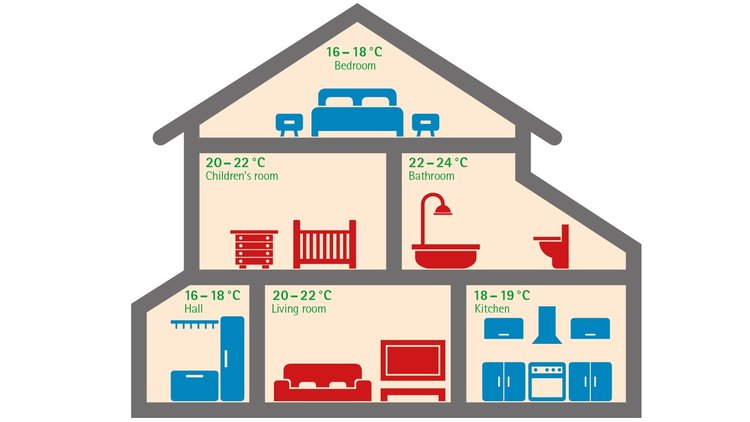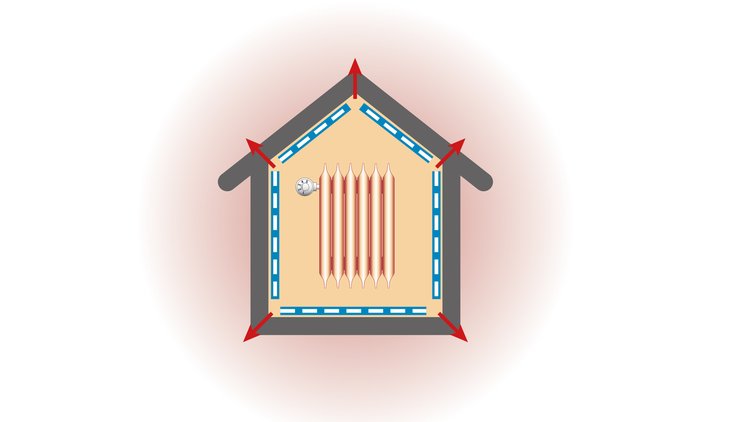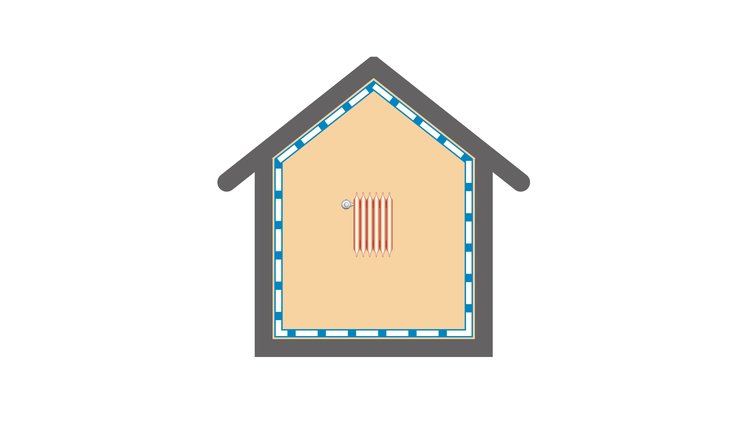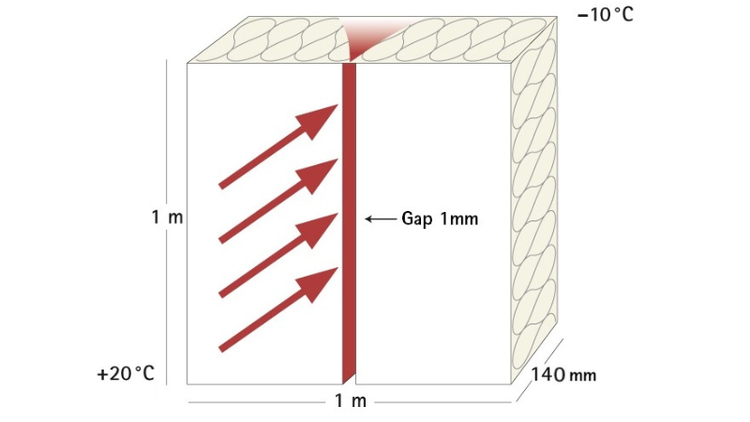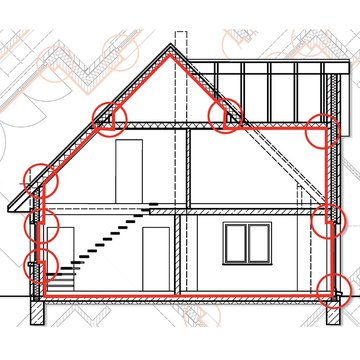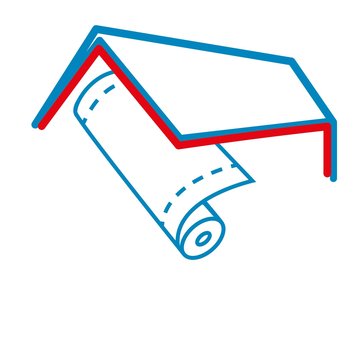Energy efficiency

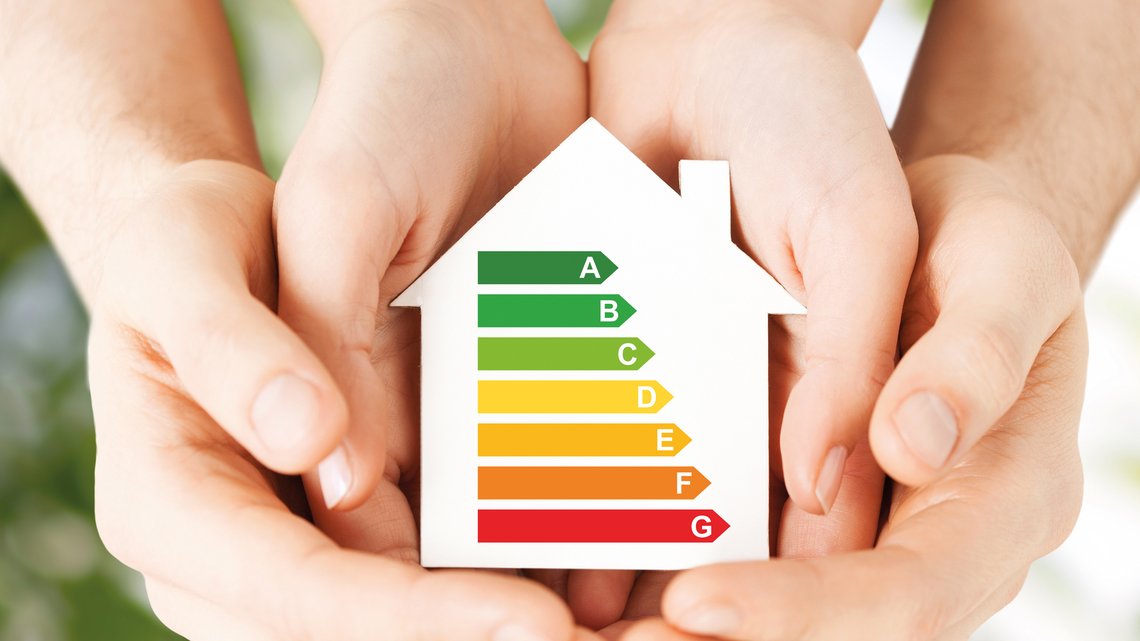


Energy
Efficiency
Inadequate Airtightness and Its Consequences
A thermally insulated, airtight building envelope plays a major role in determining how comfortable and pleasant an indoor environment is for us and how well we can work, learn or relax there. The air temperature has the strongest effect on our perception of comfort level: a temperature range of between 20 °C and 23 °C in homes is regarded as comfortable in winter. In comparison, temperatures of up to 26 °C are perceived as pleasant in summer when relative humidity is maintained around 50%. In this context, airtightness has a crucial influence on the effectiveness of thermal protection in both winter and summer.
A Leaky Building Envelope Leads to High Heating Costs
Even the smallest leaks in the vapour control layer – such as those that arise due to faulty adhesion between membrane overlaps or joints – have far-reaching consequences. A defect of this kind has the same impact as a continuous gap between the window frame and the walls – and, of course, nobody would tolerate a gap of this kind! Gaps in the vapour control layer should be given the same attention.
A Sealed Building Envelope Delivers Low Costs and a Pleasant Indoor Environment
The higher heating costs caused by faulty seals lead to reduced cost-effectiveness of the thermal insulation for the building owner.
A study by the Institute for Building Physics in Stuttgart has shown that the U-value of a thermal insulation structure is reduced by a factor of 4.8.¹⁾ When applied to a practical case, this means that the same amount of energy is required for heating an air leaky house with a living space of 80 m² as would be required for an airtight house with a floor area of around 400 m².
The uncontrolled entry of air can also have a negative impact on the indoor environment, e.g. due to draughts, excessively dry indoor air in wintertime, or rapid, unpleasant heating-up in summertime.
Only a Gap-Free Thermally Insulated Structure Provides the Full Insulation Value
According to a 2016 BRANZ study, new detached homes in Christchurch consumed on average 76 kWh/m2 for space heating; a certified passive house in the same climate requires only 15 kWh/m2 (while maintaining a more comfortable temperature of 20 degrees year round in every room, which the detached houses in the study wont be achieving). Gaps in the airtightness layer of buildings lead to a significant increase in the energy requirement per square metre of living space.
¹) The Institute for Building Physics in Stuttgart carried out tests on a 1 m x 1 m thermal insulation structure with an insulation thickness of 140 mm. With gap-free, airtight installation, the previously calculated insulation performance of 0.30 W/(m² K) was achieved. However, if the same structure has a gap with a width of just 1 mm in its airtightness layer, the U value worsens to 1.44 W/(m² K). In other words, almost five times more heat is lost compared to the airtight structure.
Small Gap, Big Problems!
How to Build a Better Tomorrow
To celebrate 20 years of INTELLO® and to raise awareness about healthier indoor environments, we've created a short documentary series highlighting key aspects of building quality homes for people. The series compares early 1900s villas with modern builds, exploring why many new homes still face moisture, cold, and long-term structural problems.
Learn why airtightness matters and uncover the reasons behind cold, damp, mouldy, and deteriorating buildings in Aotearoa.
Small gap, big problems
Join us as we explore Airtightness — a concept often misunderstood in New Zealand. You may be surprised by what we uncover.
Airtightness Part 1
Why do early 1900s Villas remain the gold standard? Haven't we learned anything in the past 120 years?
Airtightness Part 2
Why are our new buildings still cold, damp, and short-lived?

